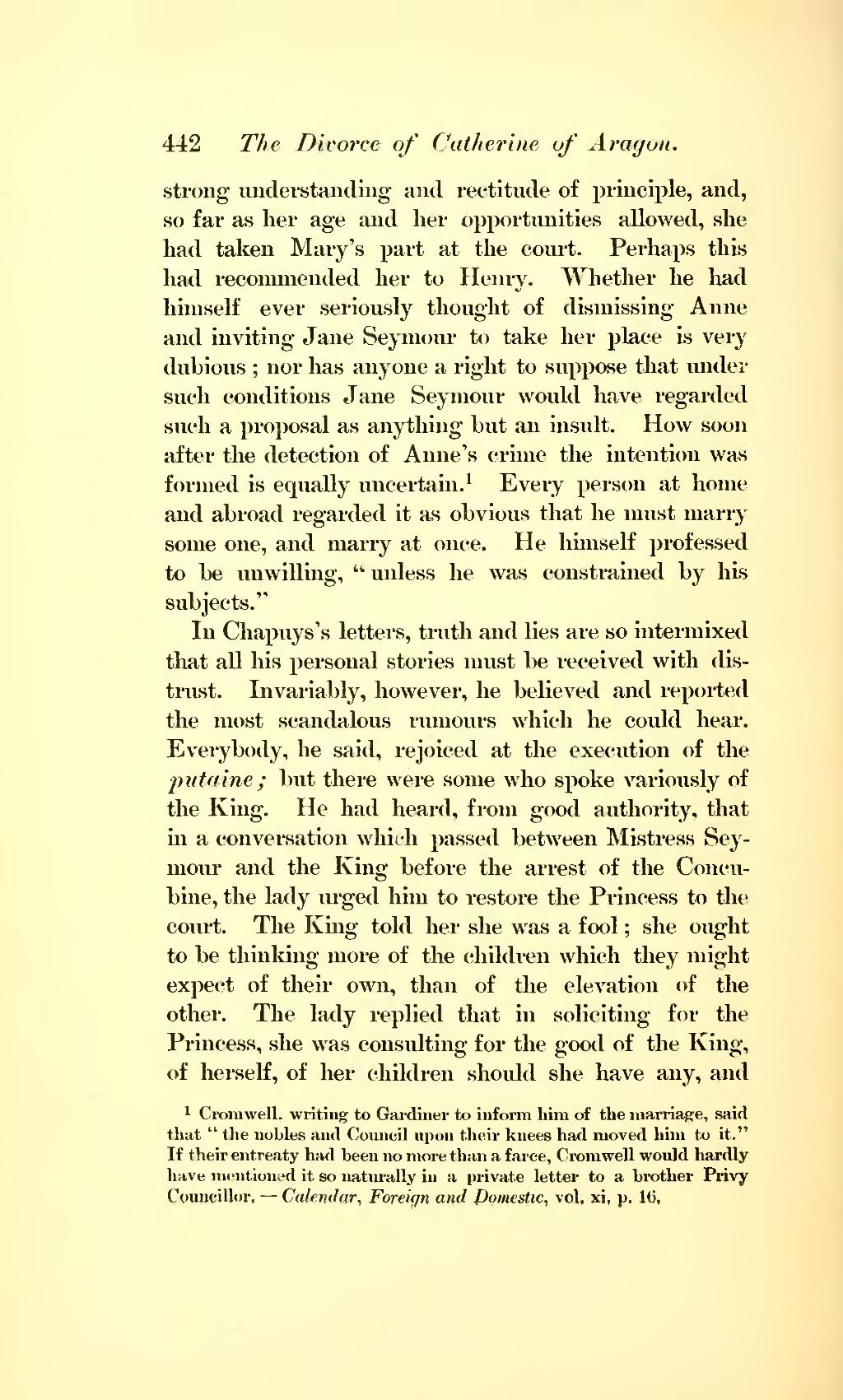strong understanding and rectitude of principle, and, so far as her age and her opportunities allowed, she had taken Mary's part at the court. Perhaps this had recommended her to Henry. Whether he had himself ever seriously thought of dismissing Anne and inviting Jane Seymour to take her place is very dubious; nor has anyone a right to suppose that under such conditions Jane Seymour would have regarded such a proposal as anything but an insult. How soon after the detection of Anne's crime the intention was formed is equally uncertain.[1] Every person at home and abroad regarded it as obvious that he must marry some one, and marry at once. He himself professed to be unwilling, "unless he was constrained by his subjects."
In Chapuys's letters, truth and lies are so intermixed that all his personal stories must be received with distrust. Invariably, however, he believed and reported the most scandalous rumours which he could hear. Everybody, he said, rejoiced at the execution of the putaine; but there were some who spoke variously of the King. He had heard, from good authority, that in a conversation which passed between Mistress Seymour and the King before the arrest of the Concubine, the lady urged him to restore the Princess to the court. The King told her she was a fool; she ought to be thinking more of the children which they might expect of their own, than of the elevation of the other. The lady replied that in soliciting for the Princess, she was consulting for the good of the King, of herself, of her children should she have any, and
- ↑ Cromwell, writing to Gardiner to inform him of the marriage, said that "the nobles and Council upon their knees had moved him to it." If their entreaty had been no more than a farce, Cromwell would hardly have mentioned it so naturally in a private letter to a brother Privy Councillor.—Calendar, Foreign and Domestic, vol. xi, p. 16.

